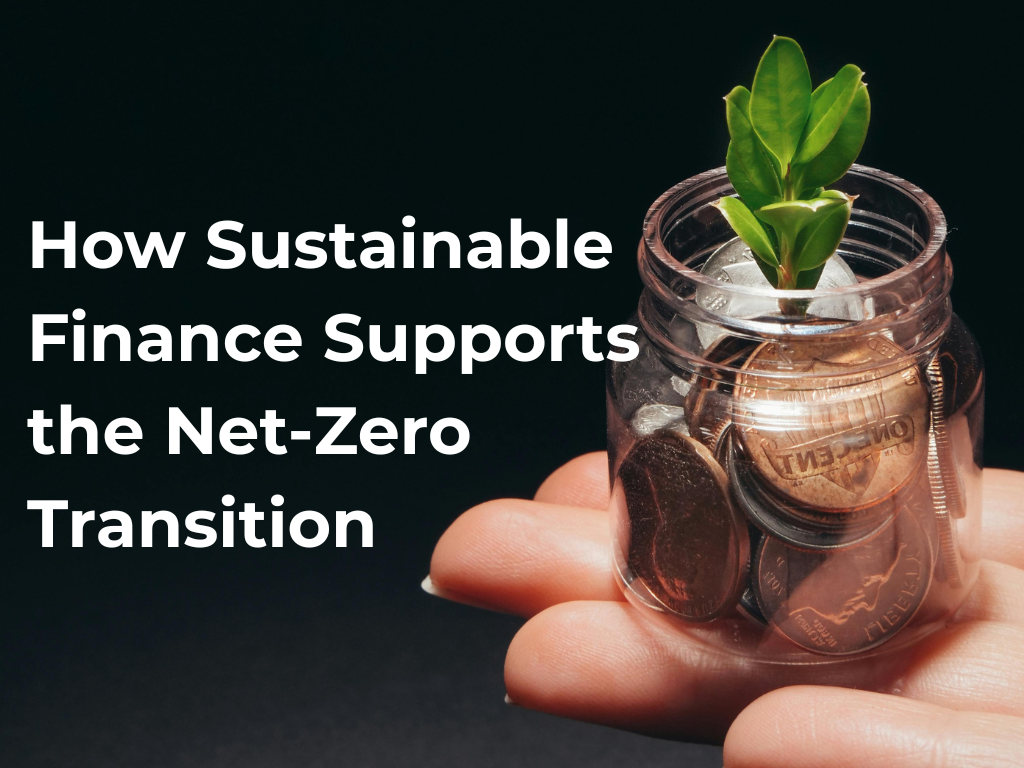The dual crises of climate change and socioeconomic inequality have sparked a transformation in how capital is allocated worldwide. At the heart of this shift is sustainable finance—a strategic approach to investing that integrates environmental, social, and governance (ESG) considerations into financial decisions. As nations pursue economic development alongside urgent climate goals, sustainable finance has emerged as a cornerstone of both progress and resilience.
This article explores the vital role sustainable finance plays in advancing global development while accelerating the net-zero transition. It examines the tools, opportunities, and challenges shaping the future of responsible investing and highlights how collaborative finance can drive real-world outcomes.
Understanding sustainable finance in a global context
What is sustainable finance?
As climate risks, social inequalities, and governance failures reshape the global economy, sustainable finance has emerged as a powerful tool to align capital with long-term societal and environmental goals. It integrates environmental, social, and governance (ESG) factors into financial decisions, distinct from traditional finance’s focus on short-term return, and aims to drive resilience, accountability, and impact. It includes instruments such as green bonds, social impact funds, ESG-linked loans, and climate-aligned investing, all designed to shift capital toward sustainable outcomes.
🔗Read the full breakdown of what sustainable finance means and how it’s being used
The role of sustainable finance in enabling the net-zero transition
Redirecting capital flows away from high-emission sectors
A core role of sustainable finance is to shift investment away from high-emission sectors and toward climate-aligned solutions. Financial institutions face increasing pressure from regulators and stakeholders to divest from fossil fuels and reduce exposure to carbon-intensive assets. This is reshaping portfolio strategies, with more capital flowing into low-carbon technologies and companies with credible transition plans. At the same time, sectors like heavy industry, aviation, and shipping face complex decarbonisation challenges. Transition finance addresses this by supporting their shift to cleaner operations, including hydrogen, carbon capture, and process upgrades. Organisations like the Glasgow Financial Alliance for Net Zero (GFANZ) provide frameworks to help investors align with science-based targets while managing systemic risk.
Mobilising capital for low-carbon technologies
Reaching net-zero emissions by 2050 will require a fundamental transformation of global energy and infrastructure systems—an effort demanding unprecedented levels of investment. Sustainable finance is central to unlocking the public and private capital needed for renewable energy, grid upgrades, energy-efficient buildings, and low-carbon transport. These projects demand long-term capital commitments to ensure financial and technical viability. According to the International Energy Agency (IEA), global energy investment is projected to reach USD 3.3 trillion in 2025, with a significant share directed toward clean energy. Solar power alone—both utility-scale and rooftop—is expected to attract USD 450 billion, making it the single largest item in global energy investment. This marks a decisive shift toward scalable, low-carbon solutions. Infrastructure investment is following a similar pattern. In Germany, the National Climate Fund has allocated €25 billion to expand EV charging infrastructure, including megawatt-scale stations for freight and dense urban networks. This initiative is part of a broader €100 billion package to accelerate clean mobility and green technology growth.
A diverse set of sustainable finance instruments—many of which have been in use for over a decade—continues to support climate-aligned investments. Green bonds, sustainability-linked loans, transition bonds, and blended finance are among the most established tools today. Looking ahead, instruments like resilience bonds and carbon-linked financing are expected to expand their role, particularly in adaptation and emerging markets. However, access to these instruments is not evenly distributed. Developed countries typically benefit from mature capital markets, strong policy frameworks, and higher investor confidence—conditions that enable them to attract and deploy climate finance at scale. In contrast, many developing countries face higher borrowing costs, limited financial infrastructure, and greater perceived risks, limiting their ability to mobilise private capital without concessional support. Yet, developing economies often offer high-impact investment opportunities, especially in clean energy access and infrastructure, where climate finance can deliver both environmental and social returns.
Funding decarbonisation and de-risking sustainable investments in emerging markets
Whilst the developed countries experience large liquidity to fund Energy and Infrastructure projects, a major barrier to scaling climate finance in emerging markets is the perception of high risk, driven by regulatory uncertainty, currency volatility, and weak infrastructure. These factors often deter private investment in regions where capital is urgently needed. Sustainable finance helps bridge this gap through blended finance, which combines public, philanthropic, or development capital to reduce investment risk and crowd in private funding. The Global Energy Alliance for People and Planet (GEAPP)exemplifies this approach by using donor and commercial funding to expand off-grid renewable energy in underserved areas. By absorbing risk and providing technical support, blended finance models unlock climate investment in high-need regions, advancing decarbonisation while ensuring financial viability.
Driving inclusive economic development and protecting vulnerable communities in emerging markets
Beyond financing, sustainable finance is helping emerging markets strengthen resilience and promote inclusive development. These regions are often the most vulnerable to climate change but lack access to affordable capital. Instruments like green microfinance and social bonds empower local communities by funding decentralised solutions such as solar-powered irrigation, clean cookstoves, and flood-resilient housing. The Green Climate Fund supports these efforts by offering concessional finance to build infrastructure, enhance energy access, and support climate adaptation. In doing so, sustainable finance ensures the net-zero transition includes and uplifts the most climate-exposed populations.
Creating sustainable job opportunities
Sustainable finance is also directly influencing labour markets by channeling capital into sectors critical to the energy transition. Investment in renewables, energy efficiency, and clean mobility is expanding employment in technical, manufacturing, and infrastructure-related roles. According to the 2024 Renewable Energy and Jobs report by the International Renewable Energy Agency (IRENA) and the International Labour Organization (ILO), renewable energy employed over 13.7 million people in 2022, rising to 16.2 million in 2023. This growth highlights how targeted investment can generate employment even amid economic uncertainty. By funding clean energy projects, skills training, and green enterprise development, sustainable finance drives job creation. Just transition principles further ensure that workers in carbon-intensive industries are supported through retraining and fair labour practices, making the green transition more inclusive and equitable.
To learn more about the roles driving change in this space, discover key ESG and sustainability careers at EnableGreen and explore how you can contribute to a more sustainable future.
Encouraging innovation and entrepreneurship
Innovation is a critical driver of the net-zero transition, and sustainable finance plays a pivotal role in enabling it. Startups and small businesses are often at the forefront of sustainability breakthroughs, developing technologies such as carbon capture, energy storage, regenerative agriculture, and circular economy platforms. However, these early-stage ventures typically face barriers in accessing capital due to higher risk profiles and longer return horizons. The Global Innovation Lab for Climate Finance committed up to $1 million in pre-seed grants to help scale climate-smart startups across Asia, Africa, and Latin America—an example of how public innovation grants can mobilise early-stage capital and support commercially viable solutions. Through climate-focused venture capital, impact investment funds, and public innovation grants, sustainable finance helps bridge this gap, allowing promising green technologies and business models to move from pilot to market. By backing entrepreneurship, it not only accelerates climate progress but also drives economic diversification and local job creation.
Challenges and barriers to scaling sustainable finance
Lack of standardisation and greenwashing risks
A major challenge facing sustainable finance is the absence of universally accepted definitions, metrics, and disclosure standards. Without consistent criteria for what qualifies as “green” or “sustainable,” investors struggle to compare assets, and companies may label investments as environmentally responsible without delivering verifiable outcomes—a practice known as greenwashing. This erodes trust in ESG-labelled products and weakens the integrity of the market. To address this, efforts are underway to introduce harmonised frameworks, such as those led by the International Sustainability Standards Board (ISSB), which aims to create globally consistent disclosure rules. Standardisation is essential not only to enhance transparency but also to ensure that capital flows are genuinely aligned with climate and sustainability goals.
If your business is navigating ESG reporting and compliance challenges, speak with our team at EnableGreen to find the right sustainability professionals to support your disclosure frameworks and build a credible reporting strategy.
Capital gaps and underinvestment
Despite growing momentum, current investment levels fall well short of what is required to meet global climate goals. The International Energy Agency estimates that annual clean energy investment must exceed $4 trillion by 2030 to align with net-zero targets—more than double current flows. While large-scale projects in developed markets are beginning to attract funding, access to capital remains a major barrier for small and medium-sized enterprises (SMEs) and countries in the Global South. These gaps limit the pace and scope of climate action where it is most urgently needed, underscoring the importance of inclusive financial strategies and targeted mechanisms to unlock private investment in underserved regions.
Balancing short-term returns with long-term goals
A persistent challenge in sustainable finance is the tension between short-term financial performance and the long-term nature of environmental and social returns. Many investors still prioritise quarterly results, making it difficult to justify investments that deliver benefits over decades. Shifting this mindset requires reframing fiduciary responsibility to include sustainability-related risks and opportunities, and recognising that long-term resilience often supports long-term profitability. Tools like sustainability-linked bonds—which adjust interest rates based on a company’s ESG performance—offer a way to align financial incentives with progress on sustainability targets, helping to close the gap between immediate returns and strategic climate commitments.
Policy, regulation, and international cooperation as enablers
Robust regulation and coordinated global frameworks are essential to scale the impact of sustainable finance instruments, ensuring transparency, accountability, and alignment with climate goals.
Regulatory frameworks supporting sustainable finance
Governments and regulators play a key role in creating an enabling environment. Policies like the EU Sustainable Finance Disclosure Regulation (SFDR) and climate-related stress tests by central banks are driving transparency and accountability. In the U.S, the Securities and Exchange Commission (SEC) adopted climate disclosure rules in early 2024 but ended its legal defence of them in March 2025, halting national implementation. Despite this, several states and international bodies continue advancing their climate reporting standards, keeping pressure on companies to improve transparency.
Multilateral collaboration and global initiatives
Multilateral efforts are essential to scale sustainable finance across borders. Frameworks like the Paris Agreement and the UN Sustainable Development Goals (SDGs) provide a shared roadmap for aligning global capital with sustainability objectives. Initiatives like the Climate Finance Leadership Initiative (CFLI) and Just Energy Transition Partnerships (JETPs) show how coordinated funding can support low-carbon transitions, especially in emerging economies and high-emission sectors.
Conclusion
Sustainable finance plays a defining role in directing global capital toward long-term climate and development priorities. By linking investment decisions to environmental and social performance, it influences how infrastructure is built, how companies operate, and how economies grow. As a driving force behind the net-zero transition, sustainable finance helps scale low-carbon technologies, accelerate innovation, and redirect capital from high-emission sectors.
At the same time, it serves as a powerful lever for equitable global development, expanding access to clean energy, strengthening climate resilience, and empowering vulnerable communities through inclusive investment. Unlocking its full potential will require coordinated regulation, transparent data, and bold financial innovation. As the 2030 and 2050 climate targets approach, the ability to mobilise and allocate capital effectively will determine whether we can deliver on both environmental and social commitments.
Stay connected
Sustainable finance will continue to shape the future of business, investment, and climate strategy. For more insights on ESG hiring, industry trends, and sustainability careers, follow EnableGreen on LinkedIn and stay updated with the latest developments driving the transition to a net-zero economy.


